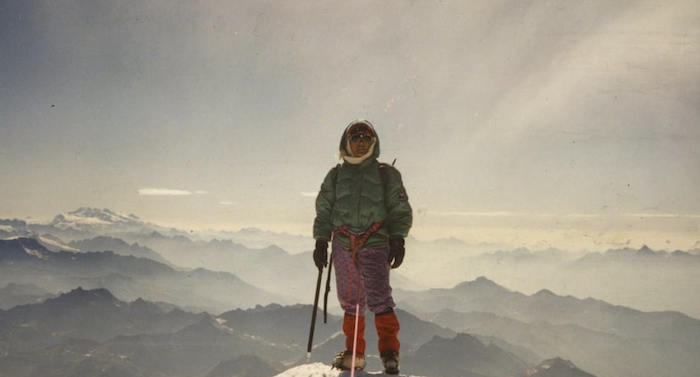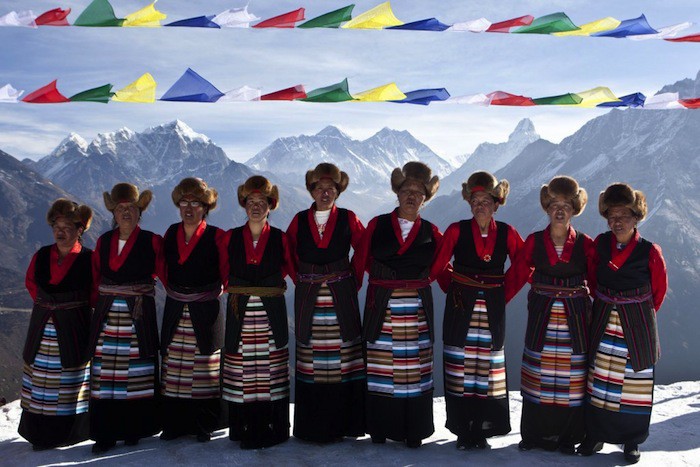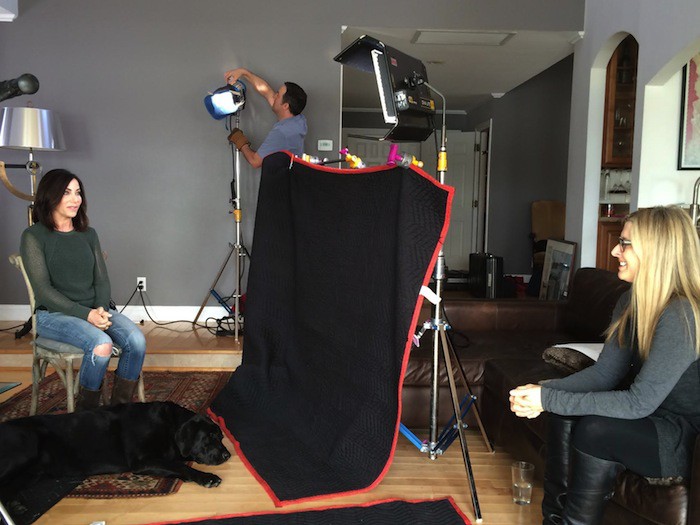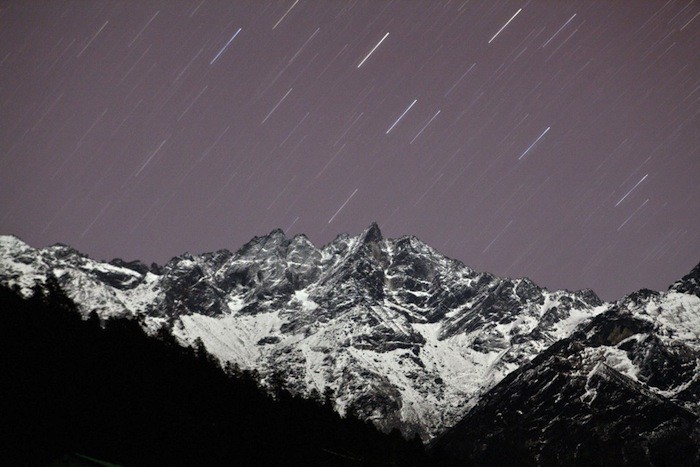Nepali Woman Battles Sexism to Summit Everest

It was unjust. Women from 16 other countries had summited Everest, but not one Nepalese female had been permitted. In a political and social battle, Pasang Lhamu Sherpa set out to change that fact. Now in the making, the documentary, The Glass Ceiling, will share the story of the late mountaineer and first Nepali woman to scale the world’s highest peak, in 1993—only to perish before her return.
Since Pasang’s accomplishment, the societal expectations and individual goals of Nepali daughters, mothers and wives has continued to shift. Her inspirational legacy has since motivated a line of record-setting Nepali female mountaineers, including several studs among the rising generation.
Take, for instance, Pasang Lhamu Sherpa Akita: the 2016 National Geographic Adventurer of the Year and recipient of the People’s Choice award. She summited Everest by the age of 22, and in 2014, became one of the first Nepali women to climb K2—the world’s second highest peak and what’s considered to be the most dangerous. Chhurim Sherpa, at age 29, was the first woman to scale Everest twice in one week, in 2012. And—though, of an earlier generation—42-year-old Lhakpa Sherpa holds the world record for seven Everest summits, the most made by any woman.
As of April 2016, close to 104 Nepalese men have summited Everest, via the South side. Comparatively lower yet growing, 21 Nepalese women have summited on the same route—since Pasang’s first summit 23 years ago—according to the authoritative Himalayan Database.
Here, I caught up with The Glass Ceiling Executive Producer Alison Levine, also a prolific mountaineer, to learn more about Pasang Lhamu Sherpa and this in-the-works production.

Nepali women on the set of The Glass Ceiling.
What social and political obstacles did Pasang Lhamu Sherpa face in her attempts to gain a permit to climb Everest?
When Passang was growing up in Nepal women were supposed to clean house, wash clothes, and tend to the potato crops. Pasang had five brothers and was the only daughter. She watched her father and brothers working in the mountaineering industry.
She was acutely aware of the respect and money that these men earned, which stirred her desire to do the same.
The problem was, back then women weren’t doing the kinds of things that men were doing. As a largely Hindu society, Nepal was decades behind Western countries when it came to women’s rights.
Why were her first three attempts to summit unsuccessful?
Two of her attempts for the summit were thwarted by poor weather.
One was unsuccessful because of team politics. The expedition leader (who was French) told her that she was not going to be part of the summit team. Pasang surmised that it was because they wanted a French woman to reach the summit before a Nepali woman.
How is Pasang Lhamu Sherpa’s story recognized in Nepal today?
Children learn about her in school. There is a day designated in her honor, along with the name’s of a hospital, a mountain, streets, schools and a mountaineering institute.

Alison Levine, Executive Producer, being interviewed on the set of The Glass Ceiling.
What do you hope to accomplish with this film?
Nancy Svendsen, the film’s director, approached me last year about getting involved, and I could not say no. Keep in mind, I am approached by people all of the time about getting involved in various projects. Usually I need to say no, because of time constraints (and lack of interest).
Nancy’s passion for this project was so contagious. She has put her heart and soul into this project, and she is determined to bring Pasang’s story to life through this film.
This story is very personal to Nancy: her sister is married to Pasang’s brother, Ang Dorjee Sherpa. While she never met Pasang, they are family. When you watch the trailer, you can see the impact that Pasang has had on young women and girls in Nepal.
I think that Pasang can have that same positive impact on people all over the world. We just need to get this film made so that the rest of the world is aware of her story.
What have been the greatest challenges and inspirations of creating this documentary?
Getting the funding has been the biggest challenge: $400,000 is a lot of money, but we are determined to tell this story the right way, which Pasang deserves. We don’t want to cut corners or have a finished product that we look at and think, “If only we would have…(fill in the blank).”
We have a very limited amount of archival footage, and the quality isn’t exactly high-definition. (Imagine what it was like to film in the early ‘90s.) We are hoping to license footage from other filmmakers to supplement what we have. And we want an original score, because it’s such an emotional film. The music will need to elicit the viewers’ emotions and carry them on this journey with Pasang.
Did Pasang Lhamu Sherpa’s achievement alter the views and roles of Nepali women? Is the culture more accepting of female mountaineers?
Absolutely! Pasang is considered to be the Rosa Parks of Nepal.

What impact did her efforts have on the political and social perspectives of Nepali female mountaineers?
One of my favorite lines from the movie trailer is when a Nepali girl looks right at the camera and declares: “Because of her (Pasang), someone can call something impossible for me, but that’s only until I do it.”
That sums it up pretty well.
In addition to Pasang Lhamu Sherpa Akita, who else is among the next generation of Nepali female climbers that we should know and watch?
There are a lot of amazing Nepali climbers that are actually much older than Pasang Lhamu Sherpa Akita—and these women show no signs of slowing down. Lhakpa Sherpa just summited Everest for the seventh time this spring, and broke her own record for the most summits made by a woman.
She is a 43-year-old single mother and she holds down two jobs to make ends meet. It’s amazing. She works as a housekeeper and at a 7-Eleven store in Connecticut. (Writer’s note: Pasang grew up in Balakharka, a village in the Makalu region of the Nepalese Himalayas, as reported by Outside.)
It’s not like she is a full-time sponsored athlete with the luxury of training all year long and that has all of her climbs paid for. She does it the hard way.
When will the documentary film premiere?
We are in the process of raising the funds to finish the film. We need to raise $400,000, and then the film will be finished within a few months. It’s such an incredible story and one that the world needs to know about.
Want to help support the film? Make a tax-deductible donation here. Or, reach out to offer sponsorship.


LET'S GET SOCIAL